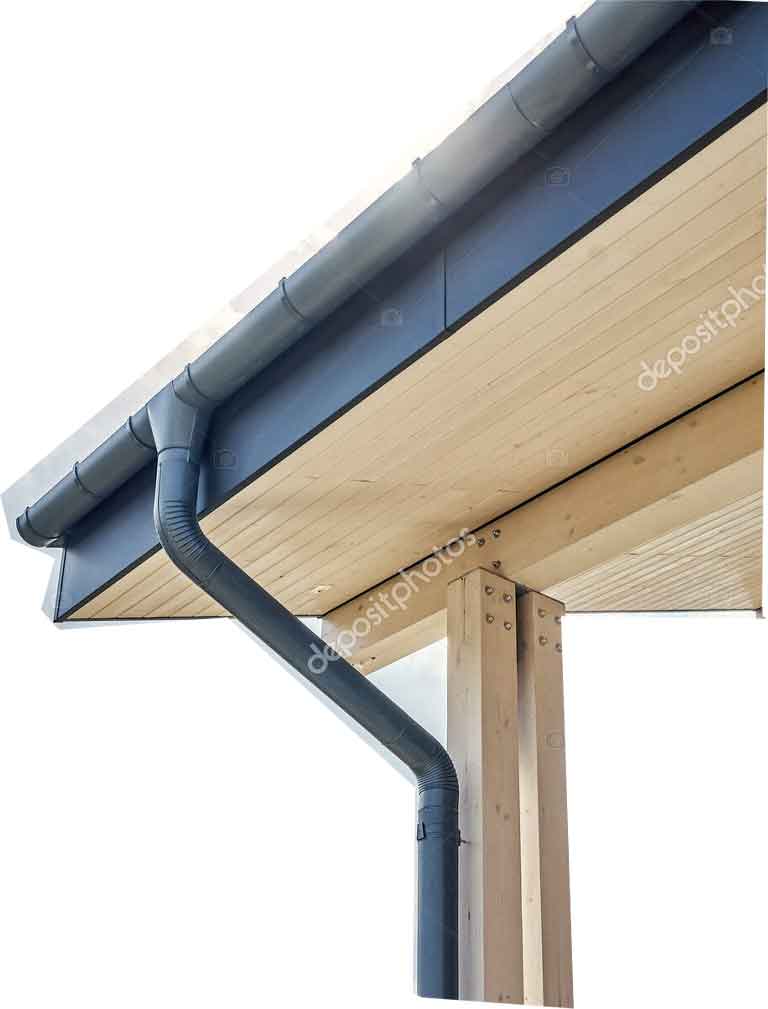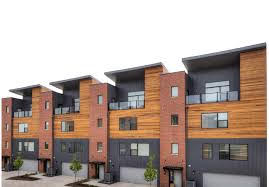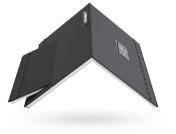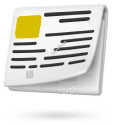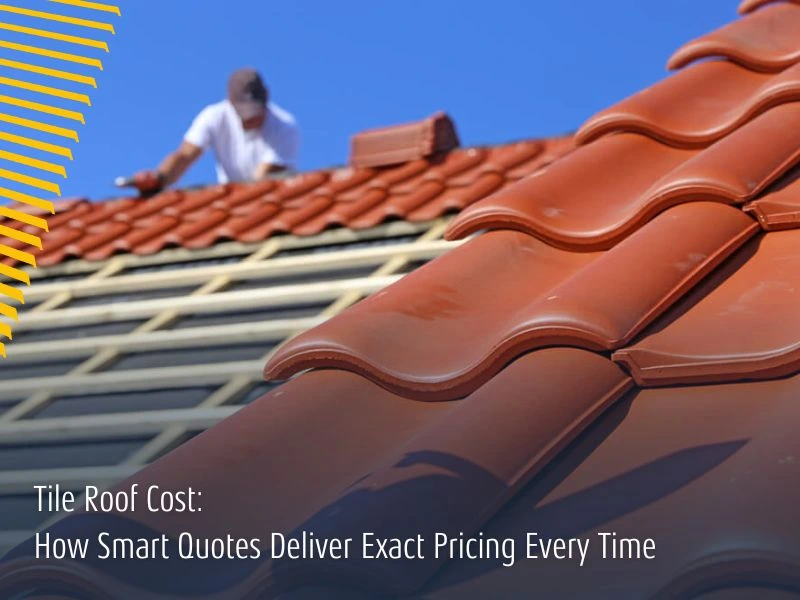Screw-down metal roofs, also known as exposed fastener systems, are a common roofing option chosen by homeowners because they are affordable, durable, and relatively easy to install. In Florida, where heavy rain, heat, and storms test every roofing system, screw-down designs can appear attractive. However, the reality is more complex. These metal roof panels are prone to long-term maintenance issues, leaks around fasteners, and shortened roof life when compared to standing seam metal roof systems.
This article explains the differences between exposed fastener and standing seam metal roofing, the risks of using corrugated metal with screws in Florida’s climate, and what to consider when investing in a new roof. By the end, you will understand why standing seam roofing and other types of metal roofing may be the better long-run choice, even if screw-down metal roofing appears cost-effective upfront.
 Exposed fasteners are screws with neoprene washers that create a seal between the screw head and the panel surface. When the screw is tightened properly, the washer helps provide a secure fit, preventing water intrusion. However, over time, Florida’s intense heat causes the metal to expand and contract. This constant movement can enlarge the hole around the screw, weaken the seal, and lead to leaks.
Manufacturers often recommend replacing the screws every 5-10 years. If homeowners fail to replace the screws, the system becomes increasingly vulnerable to water infiltration. While metal roofing has become popular for its durability, the exposed fastener roof design introduces weaknesses not found in concealed fastener systems like standing seam metal roofs.
Exposed fasteners are screws with neoprene washers that create a seal between the screw head and the panel surface. When the screw is tightened properly, the washer helps provide a secure fit, preventing water intrusion. However, over time, Florida’s intense heat causes the metal to expand and contract. This constant movement can enlarge the hole around the screw, weaken the seal, and lead to leaks.
Manufacturers often recommend replacing the screws every 5-10 years. If homeowners fail to replace the screws, the system becomes increasingly vulnerable to water infiltration. While metal roofing has become popular for its durability, the exposed fastener roof design introduces weaknesses not found in concealed fastener systems like standing seam metal roofs.
 The lifespan of a screw-down metal roof depends heavily on maintenance. Because the metal expands and contracts in Florida’s heat, screws often loosen. Homeowners must replace the screws and neoprene washers every 5-10 years to prevent leaks. Without this living roof maintenance, water infiltration can reduce roof lifespan significantly.
In contrast, standing seam metal roofs help reduce energy costs, resist leaks, and typically last longer with minimal maintenance. A conventional roof with asphalt shingles may be cheaper upfront, but metal roofing options like standing seam panels can offer better economic benefits over time. SmartQuote lets you see exactly what a long-lasting metal roofing system will cost: Start SmartQuote.
The lifespan of a screw-down metal roof depends heavily on maintenance. Because the metal expands and contracts in Florida’s heat, screws often loosen. Homeowners must replace the screws and neoprene washers every 5-10 years to prevent leaks. Without this living roof maintenance, water infiltration can reduce roof lifespan significantly.
In contrast, standing seam metal roofs help reduce energy costs, resist leaks, and typically last longer with minimal maintenance. A conventional roof with asphalt shingles may be cheaper upfront, but metal roofing options like standing seam panels can offer better economic benefits over time. SmartQuote lets you see exactly what a long-lasting metal roofing system will cost: Start SmartQuote.
 Choosing a new roof is an investment, and in Florida, the risks of screw-down systems often outweigh their low price. Standing seam panels conceal fasteners, reduce maintenance, and offer extended roof life. They are more resistant to storms, provide a modern aesthetic, and often come with stronger warranties.
For homeowners comparing metal roofing options, the SmartQuote tool allows you to see the exact cost of standing seam versus screw-down systems without a sales pitch: Get your SmartQuote today. This makes it easier to invest confidently in a roofing system designed to handle Florida’s challenging climate.
Choosing a new roof is an investment, and in Florida, the risks of screw-down systems often outweigh their low price. Standing seam panels conceal fasteners, reduce maintenance, and offer extended roof life. They are more resistant to storms, provide a modern aesthetic, and often come with stronger warranties.
For homeowners comparing metal roofing options, the SmartQuote tool allows you to see the exact cost of standing seam versus screw-down systems without a sales pitch: Get your SmartQuote today. This makes it easier to invest confidently in a roofing system designed to handle Florida’s challenging climate.
What is a Screw-Down Metal Roof Panel System
A screw-down metal roof, also known as screw-down metal roofing, is a system where metal panels are fastened directly to the roof deck or purlins with screws and neoprene washers. This design is also called an exposed fastener metal roof because the screws remain visible on the surface of the panel. Unlike standing seam panels that conceal fasteners, exposed fasteners create hundreds of penetration points across the surface. These panels can be corrugate, ribbed, or PBR style, and they are widely used in agricultural, residential, and commercial settings. The installation process is relatively simple, making it a common DIY roofing system for sheds or barns. But when used on a home in Florida, the long run disadvantages can outweigh the initial savings.How Do Exposed Fasteners Work on a Metal Roof
 Exposed fasteners are screws with neoprene washers that create a seal between the screw head and the panel surface. When the screw is tightened properly, the washer helps provide a secure fit, preventing water intrusion. However, over time, Florida’s intense heat causes the metal to expand and contract. This constant movement can enlarge the hole around the screw, weaken the seal, and lead to leaks.
Manufacturers often recommend replacing the screws every 5-10 years. If homeowners fail to replace the screws, the system becomes increasingly vulnerable to water infiltration. While metal roofing has become popular for its durability, the exposed fastener roof design introduces weaknesses not found in concealed fastener systems like standing seam metal roofs.
Exposed fasteners are screws with neoprene washers that create a seal between the screw head and the panel surface. When the screw is tightened properly, the washer helps provide a secure fit, preventing water intrusion. However, over time, Florida’s intense heat causes the metal to expand and contract. This constant movement can enlarge the hole around the screw, weaken the seal, and lead to leaks.
Manufacturers often recommend replacing the screws every 5-10 years. If homeowners fail to replace the screws, the system becomes increasingly vulnerable to water infiltration. While metal roofing has become popular for its durability, the exposed fastener roof design introduces weaknesses not found in concealed fastener systems like standing seam metal roofs.
Why Standing Seam Metal Roofs Are a Better Option
A standing seam metal roof uses concealed fasteners that lock panels together with vertical seams or crimp profiles. The fasteners are hidden beneath the surface, eliminating hundreds of exposed screw holes. Standing seam roofing is more resistant to water intrusion, requires less maintenance, and has a longer warranty period compared to exposed fastener metal roofing. Standing seam metal panels also provide a modern look and high-quality aesthetic that appeals to many residential homeowners. They work well with insulation layers, reduce the risk of leaks, and can extend roof lifespan. While more expensive upfront, the long-term durability often makes them a better investment compared to screw-down metal roofs.Are Screw-Down Metal Roofs Suitable for Residential Homes in Florida
In residential applications, screw-down metal roofs may seem affordable, but they bring significant disadvantages. Florida’s climate subjects the panels to intense UV rays, high humidity, and frequent rainstorms. Each screw with its neoprene washer becomes a weak point that can fail prematurely under these conditions. While screw-down systems are still used in agricultural buildings, sheds, and barns, they are not ideal for residential settings. A homeowner considering a new roof should think carefully about long-term roof maintenance and the potential cost of roof repair from leaks and premature failure. Using SmartQuote, you can compare the exact cost difference between screw-down and standing seam systems online: Get your SmartQuote now.What Types of Metal Roofing Panels Exist Besides Screw-Down
There are several types of metal roofing available. Exposed fastener metal roofs include corrugated metal and PBR profiles, which are often used for agricultural buildings. Standing seam panels are considered higher-end, providing both durability and a sleek modern look. Different types of metal roofing use various substrates such as Galvalume for corrosion resistance. A standing seam metal roof may be more expensive, but it eliminates the need to replace the screws every 5-10 years. For homeowners comparing roofing materials, it is important to consider benefits and costs over the roof life, not just the installation price.How Long Do Screw-Down Metal Roofs Last
 The lifespan of a screw-down metal roof depends heavily on maintenance. Because the metal expands and contracts in Florida’s heat, screws often loosen. Homeowners must replace the screws and neoprene washers every 5-10 years to prevent leaks. Without this living roof maintenance, water infiltration can reduce roof lifespan significantly.
In contrast, standing seam metal roofs help reduce energy costs, resist leaks, and typically last longer with minimal maintenance. A conventional roof with asphalt shingles may be cheaper upfront, but metal roofing options like standing seam panels can offer better economic benefits over time. SmartQuote lets you see exactly what a long-lasting metal roofing system will cost: Start SmartQuote.
The lifespan of a screw-down metal roof depends heavily on maintenance. Because the metal expands and contracts in Florida’s heat, screws often loosen. Homeowners must replace the screws and neoprene washers every 5-10 years to prevent leaks. Without this living roof maintenance, water infiltration can reduce roof lifespan significantly.
In contrast, standing seam metal roofs help reduce energy costs, resist leaks, and typically last longer with minimal maintenance. A conventional roof with asphalt shingles may be cheaper upfront, but metal roofing options like standing seam panels can offer better economic benefits over time. SmartQuote lets you see exactly what a long-lasting metal roofing system will cost: Start SmartQuote.
What Are the Common Problems with Exposed Fasteners
The primary disadvantage of exposed fasteners is the risk of leaks. Every screw hole is a potential failure point, especially when fasteners are installed improperly. Over-tightened screws can damage washers, while under-tightened ones fail to provide a secure seal. Other issues include oversized holes, deterioration of neoprene washers, and corrosion of metal panels around screws. Florida’s storms increase these risks, as wind-driven rain can penetrate any weak point in the roofing system. Roofs can serve as long-term protection only if they are built with reliable systems that minimize such risks.Is DIY Installation a Good Idea for Screw-Down Metal Roofs
Because screw-down metal roofing is relatively easy to fasten, many homeowners consider DIY installation. Stores like Home Depot sell screw-down panels and kits that seem accessible for a do-it-yourself project. However, improper installation can lead to serious long run issues. If screws are not fastened at the correct setting or if washers are over-compressed, the seal can fail prematurely. Installing insulation and purlins correctly is also critical for performance. While DIY roofing might save money upfront, a contractor experienced with metal roofing products is better equipped to ensure proper installation and prevent costly roof repair later.How Do Warranties Differ Between Screw-Down and Standing Seam Roofs
Warranty coverage is another factor homeowners should consider. Exposed fastener systems typically come with shorter warranties, as manufacturers know screws will need to be replaced and seals may fail. A warranty may not cover leaks caused by improper fasten installation or missed maintenance. In contrast, standing seam metal roof systems often carry longer warranties because the concealed fasteners and standing seam design minimize weak points. The specification and rating of each metal roofing product will outline what is covered. For homeowners comparing warranties, SmartQuote can help provide an insurance-ready estimate: See SmartQuote.Why Corrugated Metal and Agricultural Panels Are Risky for Homes
Corrugated metal is one of the oldest roofing systems, widely used in agricultural and industrial applications. While corrugate panels provide durability for barns and warehouses, they are less suited for residential roofs in Florida. Exposed fasteners make them vulnerable to leaks, and their agricultural rating does not always meet the specifications for homes. Homeowners seeking a durable and resistant roofing option should invest in standing seam roofing instead. It provides a modern look, better seal against water, and longer durability. Although corrugated panels might appear as a low-cost roofing system, the disadvantage in residential settings is clear when considering the long run maintenance requirements.Should You Invest in Standing Seam Roofing Instead
 Choosing a new roof is an investment, and in Florida, the risks of screw-down systems often outweigh their low price. Standing seam panels conceal fasteners, reduce maintenance, and offer extended roof life. They are more resistant to storms, provide a modern aesthetic, and often come with stronger warranties.
For homeowners comparing metal roofing options, the SmartQuote tool allows you to see the exact cost of standing seam versus screw-down systems without a sales pitch: Get your SmartQuote today. This makes it easier to invest confidently in a roofing system designed to handle Florida’s challenging climate.
Choosing a new roof is an investment, and in Florida, the risks of screw-down systems often outweigh their low price. Standing seam panels conceal fasteners, reduce maintenance, and offer extended roof life. They are more resistant to storms, provide a modern aesthetic, and often come with stronger warranties.
For homeowners comparing metal roofing options, the SmartQuote tool allows you to see the exact cost of standing seam versus screw-down systems without a sales pitch: Get your SmartQuote today. This makes it easier to invest confidently in a roofing system designed to handle Florida’s challenging climate.
Key Takeaways
- Screw-down metal roofing, also known as exposed fastener systems, is affordable but risky in Florida.
- Every screw hole with a neoprene washer can weaken over time, leading to leaks and higher maintenance.
- Homeowners must replace the screws every 5-10 years to extend roof lifespan.
- Standing seam metal roofs conceal fasteners, reduce maintenance, and provide a secure roofing system.
- Corrugated metal panels are more suited for agricultural buildings than residential homes.
- DIY installation is possible but improper fasten methods can cause costly roof repair.
- Warranties for screw-down systems are shorter compared to standing seam roofing systems.
- SmartQuote provides exact pricing online, helping homeowners compare roofing materials with confidence.



